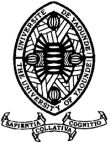Antibiotic Resistance Phenotype of Escherichia Coli and Klebsiella Pneumoniae Strains Isolated in Bamako
Phénotype de Résistance aux Antibiotiques des Souches de Escherichia Coli et de Klebsiella Pneumoniae Isolées à Bamako
DOI:
https://doi.org/10.5281/hra.v2i6.5799Keywords:
Phenotype, resistance, Escherichia coli, Klebsiella pneuminiaeAbstract
RESUME
Introduction. La résistance aux antibiotiques constitue aujourd’hui l’une des plus graves menaces pesant sur la santé mondiale. L’objectif de cette étude était de déterminer les phénotypes de résistances des souches E. coli et de K. pneumoniae isolées de divers prélèvements pathologiques à Bamako. Méthodologie. Il s’est agi d’une étude prospective sur une période d’un an, portant sur les comptes rendus des demandes d’examens bactériologiques au laboratoire. Les méthodes standards de bactériologie ont été utilisées pour l’identification de nos souches sur la base des caractères morphologiques, biochimiques et culturaux. L’antibiogramme des souches isolées a été réalisé selon la méthode de diffusion en milieu gélosé Mueller Hinton avec des disques suivant les recommandations du CASFM/EUCAST. Résultats. Un total de 639 souches d’Entérobactéries, dont 449 souches de E. coli et 108 souches de K. pneumoniae ont été isolées au laboratoire. Ces souches ont été isolées majoritairement des urines et des pus. L’antibiogramme réalisé sur les souches isolées des patients hospitalisées et non hospitalisées montre que l’ensemble de nos souches étudiées chez exprimaient des phénotypes variables évoluant dans le même sens pour les antibiotiques des différentes familles d’antibiotiques testées. Il a révélé une proportion de bactéries productrices de de Céphalosporinase haut niveau variant entre 33,3 % et 70,8 %. La résistance à tous les aminosides testés variait entre 30,3 % et 50,0 %. La résistance aux quinolones dite de haut niveau de résistance qui associe une altération concomitante sur le gène gyrA et le gène parC a été observée dans une proportion élevée des entérobactéries isolées. Conclusion. Cette étude montre un niveau élevé de résistances acquises aux différentes familles d’antibiotiques due à la production de certaines enzymes par nos souches bactériennes étudiées. Ces résistances soulignent la nécessité d’adapter les schémas thérapeutiques à l’épidémiologie locale.
ABSTRACT
Introduction. Antibiotic resistance is one of the most serious threats to global health today. The aim of this study was to determine the resistance phenotypes of E. coli and K. pneumoniae strains isolated from various pathological samples in Bamako. Methodology. This was a prospective study over a period of one year, based on reports of requests for bacteriological examinations in the laboratory. Standard bacteriological methods were used to identify our strains on the basis of morphological, biochemical and cultural characteristics. Antibiograms of the isolated strains were performed using the Mueller Hinton agar diffusion method with discs in accordance with CASFM/EUCAST recommendations. Results. A total of 639 strains of Enterobacteriaceae, including 449 strains of E. coli and 108 strains of K. pneumoniae were isolated in the laboratory. Most of these strains were isolated from urine and pus. The antibiogram performed on the strains isolated from hospitalised and non-hospitalised patients showed that all of our strains expressed variable phenotypes that evolved in the same direction for the different families of antibiotics tested. It revealed a proportion of high-level cephalosporinase-producing bacteria ranging from 33.3% to 70.8%. Resistance to all the aminoglycosides tested ranged from 30.3% to 50.0%. High-level resistance to quinolones, which combines a concomitant alteration in the gyrA gene and the parC gene, was observed in a high proportion of the enterobacteria isolated. Conclusion. This study shows a high level of acquired resistance to different families of antibiotics due to the production of certain enzymes by the bacterial strains studied. These resistances highlight the need to adapt treatment regimens to local epidemiology.
References
- WHO. Résistance aux antibiotiques. WHO. 2018 cité Décembre 2019. Google Scholar
- Philippon A., et G. Arlet G. « Bêta-Lactamases de Bacille à Gram négatif / le mouvement perpétuel. » Annales de biologie clinique 2006, 64:37‑51.
- Brun-Buisson C., Philippon A., Ansquer M., Legrand P., Montravers F., et Duval J. Transferable enzymatic resistance to third-generation Cephalosporin during nosocomial outbreak of multiresistant Klebsiella pneumoniae ». The Lancet 1987, 330(8554):302‑6. doi: 10.1016/S0140-6736(87)90891-9.
- Ben H. A., Sahnoun O., Ben Romdhane F., Loussaıef C., Noomen S., et Bouzouaia N. Profil de sensibilité aux antibiotiques des entérobactéries uropathogènes isolées dans la région de Monastir. Rev Tun Infectiol 2008, 2(2):5‑8.
- Carattoli A. 2009. Resistance Plasmid Families in Enterobacteriaceae. Antimicrobial Agents and Chemotherapy 53(6):2227‑38. doi: 10.1128/aac.01707-08.
- Fauchère, J. L. Bactério fiches: Techniques en bactériologie clinique. Paris 1997: Ellipse.
- Ouedraogo, A. S., Jean Pierre A., Bañuls L. A., Ouédraogo R., et Godreuil S. Emergence and spread of antibiotic resistance in West Africa : contributing factors and threat assessment ». Médecine et Santé Tropicales 2017, 27(2):147‑54. doi: 10.1684/mst.2017.0678.
- Cohen, R., Bingen E., Grimprel E., Raymond J., et Gendrel D. 2011. « Résistance aux antibiotiques : un nouveau tournant à ne pas manquer ». Archives de pediatrie 4(18):359‑61. doi: 10.1016/j.arcped.2011.01.023.
- Bekhti H., et Belhadi F. Z. « Evolution de la résistance bactérienne aux antibiotiques au niveau de CH Tlemcen et l’EHS mère enfant entre 2016 et 2018 ». Thèse : Pharmacie, 2019, Université Abou Bekr Belkaïd, Algérie.
- Bauer A., Kirby W., Sherris J. C., Turck M. Antibiotic susceptibility testing by a standardized single disk method. Am J Clin Pathol. 1966; 45:493.
- CASFM/EUCAST. Recommandations 2023 V.1.0 Juin. CSFM. 2020. Cité le 27 déc. 2023. PubMed | Google Scholar.
- EUCAST. Breakpoint tables for interpretation of MICs and zone diameters. Version 13.1, 2023. http://www.eucast.org." Cité le 27 déc 2023.
- Gonsu Kamga H, Nzenpang R, Toukam M, Sando Z and Koulla Shiro. Phénotypes de résistance des souches d’Escherichia coli responsables des infections urinaires communautaires dans la ville de Yaoudé Cameroun. African Journal of Pathology and Microbiology, 2014, Vol. 3, 1-4. Article ID235891, 4pages.
- Zafindrasoa Domoina Rakotovao-Ravahatra, Fidiniaina Mamy Randriatsarafara, Saïda Rasoanandrasana, Léa Raverohanta, Andriamiadana Luc Rakotovao. Phénotypes de résistance des souches d’Escherichia coli responsables d’infection urinaire au laboratoire du Centre Hospitalo-Universitaire de Befelatanana Antananarivo. Pan African Medical Journal. 2017;26:166. doi:10.11604/pamj.
- Refoo Arafa N, Smati F., Scheftel JM., Meunier O. Caractérisation phénotypique et génotypique de souches de Klebsiella pneumoniae subsp pneumoniae isolées a l’hôpital Universitaire de Constantine, Algérie. Sciences & Technologie C - Nº 30 Décembre (2009), pp 43-49.
- Nguyen JC, Lambert T. Interprétation phénotypique de l’antibiogramme vis-à-vis des aminosides. RFL. 2012; 2012(445):75-7. Google Scholar
Downloads
Published
How to Cite
Issue
Section
License
Copyright (c) 2024 Mohamed Ag Baraïka, Aboubacar A Goro, Aminata Maiga, Youssouf Dembélé, Mahamadou Abdou, Flabou Bougoudogo, Bourèma Kouriba

This work is licensed under a Creative Commons Attribution-NoDerivatives 4.0 International License.
Authors who publish with this journal agree to the following terms:
- Authors retain copyright and grant the journal right of first publication with the work simultaneously licensed under a Creative Commons Attribution License CC BY-NC-ND 4.0 that allows others to share the work with an acknowledgement of the work's authorship and initial publication in this journal.
- Authors are able to enter into separate, additional contractual arrangements for the non-exclusive distribution of the journal's published version of the work (e.g., post it to an institutional repository or publish it in a book), with an acknowledgement of its initial publication in this journal.
- Authors are permitted and encouraged to post their work online (e.g., in institutional repositories or on their website) prior to and during the submission process, as it can lead to productive exchanges, as well as earlier and greater citation of published work










